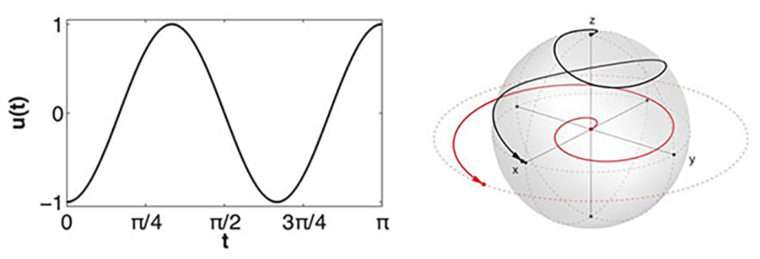Engineers develop key mathematical formula for driving quantum experiments

Since he was a graduate student, Washington University in St. Louis systems engineer Jr-Shin Li has provided specific mathematical information to experimentalists and clinicians who need it to perform high-resolution magnetic resonance applications, such as body MRIs for medical diagnosis or spectroscopy for uncovering protein structures. Now, after more than a decade of work, he has developed a formula that researchers can use to generate that information themselves.
Li, the Das Family Career Development Distinguished Associate Professor in the School of Engineering & Applied Science, and his collaborators have derived a mathematical formula to design broadband pulse sequences to excite a population of nuclear spins over a wide band of frequencies. Such a broadband excitation leads to enhanced signal or sensitivity in diverse quantum experiments across fields from protein spectroscopy to quantum optics.
The research, the first to find that designing the pulse can be done analytically, was published in Nature Communications Sept. 5.
"This design problem is traditionally done by purely numerical optimization," Li said. "Because one has to design a common input—a magnetic field to excite many, many particles—the problem is challenging. In many cases in numerical optimization, the algorithms fail to converge or take enormous amounts of time to get a feasible solution."
For more than a decade, Li has sought a better way for pulse design using the similarity between spins and springs by applying numerical experiments. Spin is a form of angular momentum carried by elementary particles. Spin systems are nonlinear and difficult to work with, Li said, while spring systems, or harmonic oscillators, are linear and easier to work with. While a doctoral student at Harvard University, Li found a solution by projecting the nonlinear spin system onto the linear spring system, but was unable to prove it mathematically until recently.
"We have very rigorous proof that such a projection from nonlinear to linear is valid, and we also have done a lot of numerical simulations to demonstrate the discovery," Li said. "My collaborator, Steffan Glaser (of the Technische Universität Munich), has been in this field of NMR spectroscopy for more than 20 years, and he is confident that if the quantum pulses perform well in computer simulations, they may perform the same in experimental systems."
The team plans to conduct various experiments in magnetic resonance to verify the analytical invention.
The theoretical work opens up new avenues for pulse sequence design in quantum control. Li plans to create a website where collaborators can enter their parameter values to generate the pulse formula they will need in their quantum experiments.
More information: Jr-Shin Li et al. Exact broadband excitation of two-level systems by mapping spins to springs, Nature Communications (2017). DOI: 10.1038/s41467-017-00441-7
Journal information: Nature Communications
Provided by Washington University in St. Louis



















